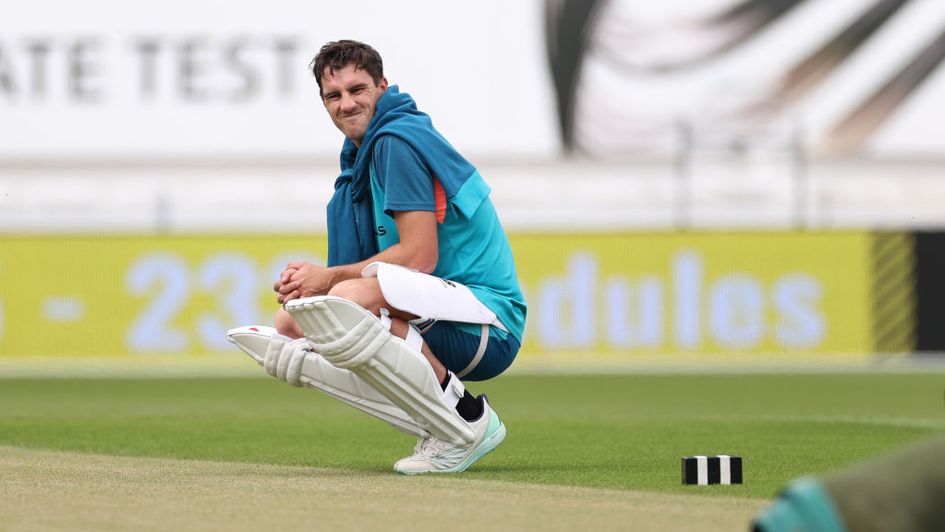Richard Mann considers the importance of the Toss in this summer's Ashes series, with some long-held beliefs expected to be broken by both captains.
For such a long time, Test cricket had become formulaic. Win the Toss, bat first and make big first-innings runs to get ahead of game, before allowing the pitch to deteriorate to such an extent that batting last was a thankless task.
That method became bombproof when T20 came along, as the previous focus on defensive techniques made way for more attacking batsmanship that while brilliant to watch, wasn’t built to last on days four and five of a Test match when pitches were breaking up and conditions highly challenging.
But things have changed more recently, with England chasing down big scores in effortless fashion last summer: 279-5 at Lord’s, 299-5 at Trent Bridge, 296-3 at Headingley. A few weeks later England went one step further, racing to a target of 378-3 before India and Jasprit Bumrah even had the chance to try again with the second new ball.
Under Ben Stokes’ captaincy, England have made chasing their mantra. Stokes of course gave himself a taste for things to come at Headingley in 2019 when his thrilling, unbeaten century helped England to a dramatic one-wicket win over Australia. The run chase this time was 362-9.
Whereas a few years ago, teams didn’t have the belief they could chase down big scores against the red ball on days-old pitches, they now know it can be done. And the tide turned before Stokes and Bazball.
Earlier in 2019, Kusal Perera – very much a white-ball specialist – produced one of the best innings in the history of Test cricket when his 153 not out helped Sri Lanka to beat South Africa by one wicket on a spicy pitch in Durban. The victory target that day was 304, and in the opposite corner were Dale Steyn, Vernon Philander and Kagiso Rabada. Chump change this was not, yet Perera approached it like a limited-overs run chase, blasting 12 fours and five sixes in a remarkable solo.
And then in January, 2021 Rishabh Pant produced a brazen, unbeaten 89 as India did the unthinkable and beat Australia at the Gabba, thanks to an outstanding run chase of 329-7 on the last day. Among the victims this time were Pat Cummins, Mitchell Starc, Josh Hazlewood, and Nathan Lyon.
That magnitude of run chase would have been almost unheard of 10 years ago. Mark Butcher at Headingley springs to mind, or Sachin Tendulkar’s masterful fourth-innings hundred against England in Chennai back in 2008. But it is happening with much more frequency now, and as a result, teams aren’t reverting to default mode at the Toss and batting first.
Empowered by their exploits in T20 and 50-over cricket, when chasing is generally preferable, batsmen are happy to bat last in the knowledge they can chase down 300, or even 400, in conditions that are still good for batting. And that’s the other fundamental part to this: pitches, particularly in England, have got much better in the last few years, holding together for longer and not breaking up – in part because more grass is being left on the surfaces at the start of matches.
Lord’s has been going that way for a while, and it was no surprise to see Ireland surpass 350 in the second innings of their recent Test with England there, despite only making 172 when batting first on day one. And then in the World Test Championship final at the Oval last week, both captains were desperate to bowl first in the belief that batting would be easier as the game went on, not as it used to be on the first two days.
"The question you always ask yourself is, 'Is it going to be easier to bat first innings or fourth innings?'" Cummins told reporters after the World Test Championship final. "That's mainly the decision.
"I think both teams thought there was probably more chance to get 10 wickets on that first day than in the fourth innings.
"That's the main question you keep asking yourself. If there are overheads in your conditions, there's a bit in the pitch on day one and you feel like you're going to take 10 wickets, you just go for it.
"I think the stigma around bowling first and not bowling them out cheaply has gone a bit."
Make no mistake, the tide has turned and that must be a good thing. No longer is the result of a Test match a foregone conclusion if a team is 300 behind when batting last, and the markets don’t quite know what to make of this new trend, meaning betting opportunities are available for those brave enough to go against the grain. For captains, timing declarations correctly has become a much more complicated business.
As was the case all last summer, and against Ireland recently, Stokes seems highly likely to bowl first when he gets the chance. Of course, there will be exceptions to the rule, but as we’ve heard, Cummins – unusually so for an Australian captain – looks like heading the same way.
Suddenly the Toss has taken on great importance again, just not for the reasons to which we had become accustomed.
More Ashes content:
Safer gambling
We are committed in our support of safer gambling.
Recommended bets are advised to over-18s and we strongly encourage readers to wager only what they can afford to lose.
If you are concerned about your gambling, please call the National Gambling Helpline / GamCare on 0808 8020 133.
Further support and information can be found at begambleaware.org and gamblingtherapy.org.
